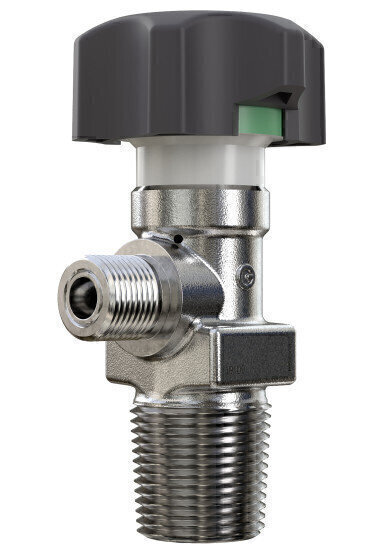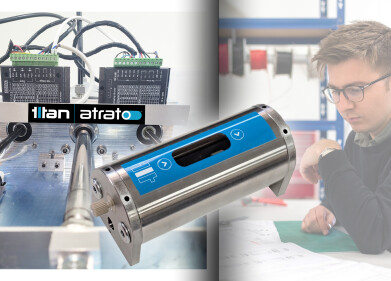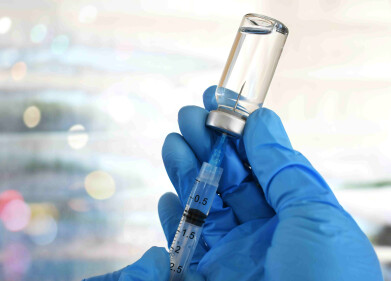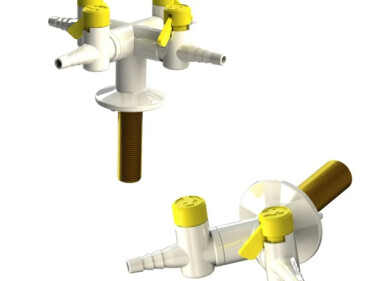Laboratory products
GCE Bringing trusted DRUVA technology to gas cylinder valves
Aug 03 2021
All around the world, hosts of laboratories offer analysis services to a wide and growing spectrum of markets requiring ever-more exacting levels of detail and accuracy in the information they provide.
To fulfil this perpetually advancing need, laboratory equipment manufacturers pursue a race for excellence in providing the best possible technological solutions captured in some of the world’s most advanced equipment serving chemical, biochemical, petrochemical, and many other demanding industries.
At the same time, global and local independent gas companies have responded to these changing needs in the provision of ever-more closely controlled processes for gas supply both in increasingly exacting single gas purifies and progressively more accurate discrete gas mixtures controlling contaminants or components, respectively, to parts-per-trillion (ppt) levels in some cases.
In contrast with this, the means by which these gases are contained within, and released from cylinders has not changed very much in the past few decades. Globally, users of specialty gases have become accustomed to accessing their special gases in a somewhat standard industrial cylinder package, designed for an entirely different use environment.
Perhaps uniquely, specialty gas cylinders are often deployed in manifolded situations, with cylinders permanently connected, supplying calibration, carrier and analysis gases to laboratory-installed systems and equipment. This situation brings about both the need to confirm at a glance whether a particular cylinder valve is open or closed, and also the ability to open and close supply valves quickly and easily to ensure process-critical supply precisely when required. Add to this an increasing prevalence of compact, lightweight cylinders in this field, and a new market specific valve requirement is emerging for an elegant solution to these very specific new needs. That’s according to gas control solutions leader GCE, which has recently introduced to the market a new member of its valve family, in the shape of the GCE One Touch 316L Stainless Steel compact diaphragm valve.
The diaphragm valve is one of four basic valve types, of which there are several versions and designs for each. Often used for highly toxic and/or high purity gases, the diaphragm valve is a handwheel-operated valve type, using a two-piece stem construction separated by non-perforated diaphragms which prevent leakage along the valve stem. The movement of these stems is governed by the operation of the handwheel, with the stem(s) movement effectively ensuring a double layer of leak security.When it comes to GCE’s new valve, the company says that laboratory technicians will be familiar with the high quality provided by its druva® range of gas control equipment products and many of the technological advances utilised in these laboratory-specific devices have been deployed in its new 316L Stainless Steel diaphragm valves to ensure both longevity of service and operational ease of use.
Incorporating a compact, easy-grip handwheel with highly visible open/closed window indications for both top and side viewing, the new diaphragm valve can be opened with one touch fingertip control through a simple 90 degree handwheel rotation, overcoming access and operability issues encountered in many laboratory gas-cabinet situations.
Slow-opening diaphragm technology enables controlled gas flow to downstream laboratory equipment. A certified 316L stainless body and Hastelloy® diaphragm ensures safe containment and precise delivery of the highest purity and most aggressive gases for the demanding laboratory market.
For further information please click here.
Digital Edition
Lab Asia Dec 2025
December 2025
Chromatography Articles- Cutting-edge sample preparation tools help laboratories to stay ahead of the curveMass Spectrometry & Spectroscopy Articles- Unlocking the complexity of metabolomics: Pushi...
View all digital editions
Events
Jan 21 2026 Tokyo, Japan
Jan 28 2026 Tokyo, Japan
Jan 29 2026 New Delhi, India
Feb 07 2026 Boston, MA, USA
Asia Pharma Expo/Asia Lab Expo
Feb 12 2026 Dhaka, Bangladesh





















